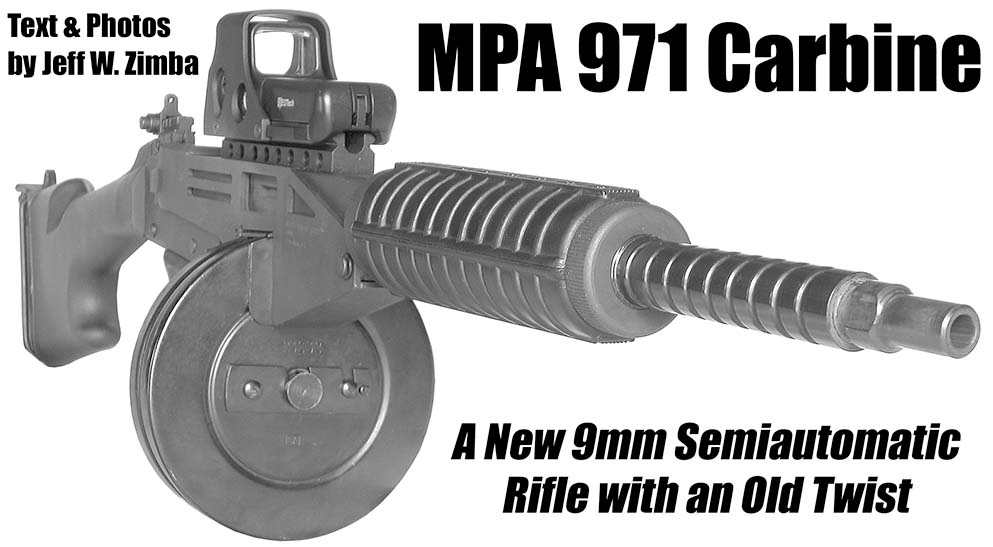By Todd Burgreen
The semiautomatic rifle SA43 Goriunov from Century International Arms is interesting on many levels for firearms enthusiasts by providing a rare historic Soviet machine gun in semiautomatic form for collectors and shooters. Century utilized the services of Wise Lite Arms for producing the Goriunov who modified it for semiautomatic only that fires from a closed bolt versus the open bolt automatic fire associated with the original Soviet machine gun. The Degtyarev carriage that comes with the SA43 Goriunov is almost as intriguing as the Goriunov rifle itself. This stems from with the way the SA43 is mounted on the carriage in conjunction with an armor shield combined with the traverse and elevation adjustments. With the Goriunov SA43, Century is giving users a chance to experience the capability of a historically significant Soviet belt fed machine gun firing the 7.62x54R cartridge, albeit semiautomatic, and is something most would never get the chance to do.
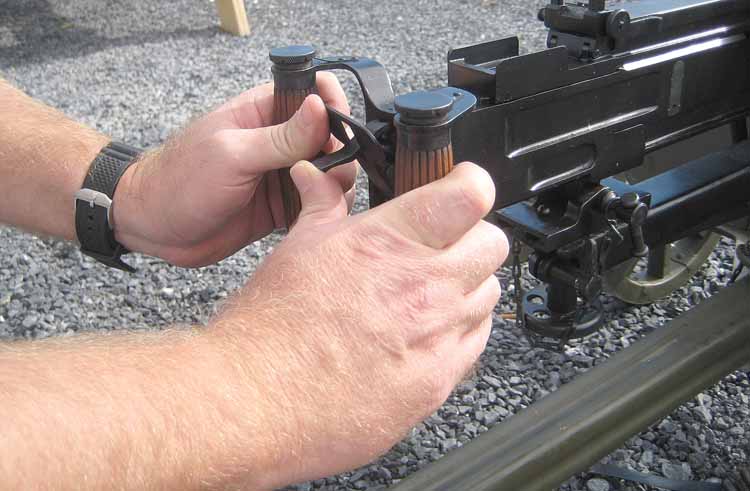
Labeled the SG43 Goriunov in its original configuration with the Soviet Army, the Goriunov fits into the historical spectrum of Soviet weaponry after the M1910 Maxim and before the PK/PKM general purpose machine gun, which is still in service today. The Goriunov utilizes a long stroke piston action located beneath the barrel. The SG43 Goriunov was brought into service in 1943 at the height of WWII as a replacement to the aged M1910 Maxim. The Goriunov was developed and brought into production in less than a year. This haste was the result of factors at the front and the poor performance of the DS-39; the intended replacement of the Russian Maxim machine guns. The Red Army specified the Goriunov function from not only ground based carriages and tripods but also anti-aircraft and vehicle mounts. The multipurpose role a reflection of the changed nature of warfare since the 1910 Maxim was adopted prior to World War I.
The SG43 was modified and improved numerous times during its 25+ year service life with six distinct versions. The original SG43 had the cocking/charging handle under the spade grip, the sear was attached to the return-spring guide, the barrel lock was a simple wedge, and no covers over the feed and ejection ports. The SG43 featured a smooth heavy profile barrel with cone shaped flash hider attached to the muzzle. Later models changed the location of the charging handle to the right side of the weapon, micrometer barrel lock and dust covers were added, along with longitudinal barrels fins in an effort to reduce weight and barrel heat, and the sear was given a separate housing. The SG43 was mounted on wheeled carriages, tripods, and vehicles, including tanks. As with many Soviet weapons, the SG43 was widely exported and manufactured in China and other Warsaw Pact countries. Over 20 countries employed the SG43 in their armed services. Besides the Soviet Army in WWII, the SG43 saw service in the Korean and Vietnam Wars against U.S. troops and its Allies.
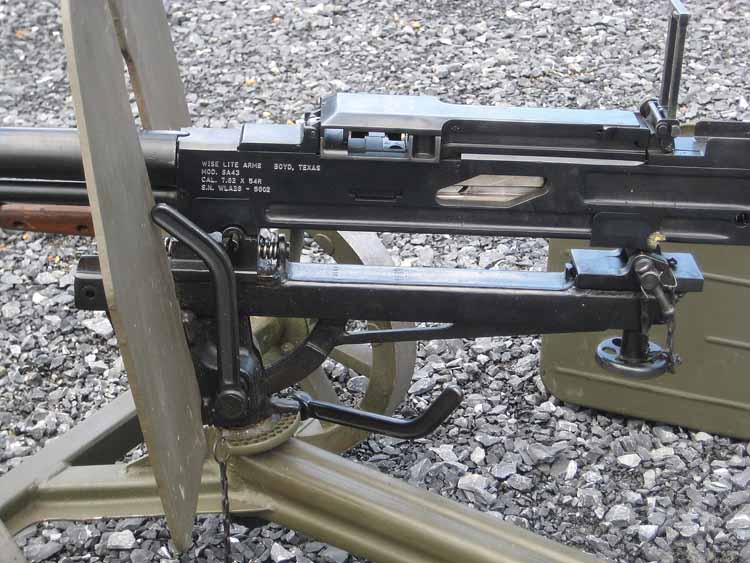
The Century SA43 tested featured the early SG43 location of the charging handle under the spade grip, simple barrel wedge arrangement and no dust covers combined with the longitudinal barrel fins of the SGM43. Conversations with Wise Lite Arms confirmed that converting the SG43 to fire semiautomatic from a closed bolt presented certain challenges in working on finding the best, most reliable way to regulate gas pressure. The SG43 was designed to fire at 600-700 rounds per minute. The Goriunov weighs almost 30.5 pounds and when mounted to the Degtyarev carriage the package rises to over 90 pounds.
The SG43 Goriunov was a complicated and expensive weapon to manufacture that had to be milled, machined, and hand fitted with interchangeability of parts between individual weapons poor. The stamped PK machine gun that replaced it in the 1960s was much simpler and economical to produce.
The SA43 is fed via a metal non-disintegrating closed pocket belt. Standard belt length is 250 rounds with Century providing three belts and ammunition cans with the SA43 Goriunov. The belt design is the same belt used by the PK machine gun that replaced the original SG43 and is still in service around the world. The functioning and mechanics of the feeding mechanism is interesting to witness in action. Literature describes the 7.62x54R feeding via the closed pocket belt as a two stage process with the Goriunov. A fresh cartridge is extracted from the belt and lowered ahead of the bolt, and then fed into the chamber with the belt advanced in preparation for the next round to feed. The Goriunov’s belt is fed from the right side of the weapon.
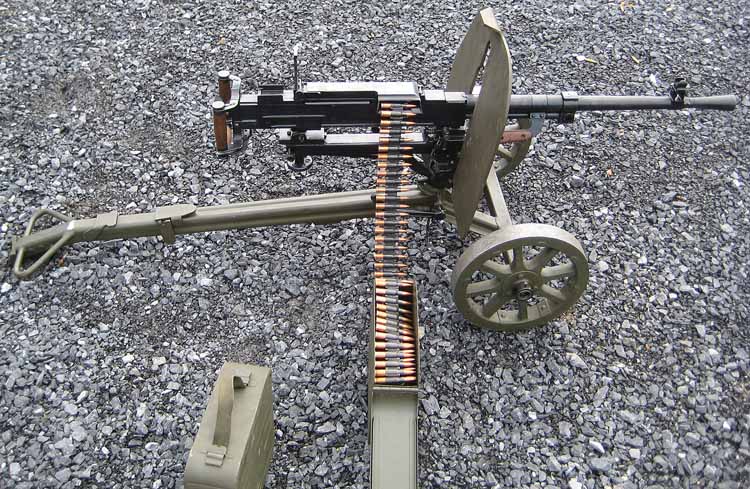
Century provides an operator’s manual with the SA43 that is a useful reference. However, the SA43 was instinctual in figuring out how to function the weapon. The top cover is raised exposing the feed mechanism with its “claw” ready to accept the rimmed 7.62x54R cartridge. Initial firing was done by feeding a single round at a time to ensure functionality and reduce risk of any “runaway” firing or other issues before placing a fully loaded belt on the feed tray. After placing a round in feed tray, the cocking handle located under the spade grip was pulled rearward and released. The SA43 has a constant safety lever that must be pushed upward before pushing the paddle trigger down to fire the weapon. The sights on the SA43 consisted of a front post protected by metal wings located behind the barrel’s somewhat crude flash hider. The rear sight is adjustable and is folding tangent leaf with U-notch. Sighted fire was used to initially align the SA43 and then spotting rounds impacting was resorted to once firing commenced. Interestingly, the SA43 was more than capable of smacking steel man sized targets out to 300 yards. Engaging the carriage’s locking mechanisms once a target was found provided for monotonous hits no matter the range. The SA43 cannot be safely fired when hand held requiring it to be mounted on the carriage.
Ammunition used for testing the SA43 was surplus steel cased 147gr-149gr “light” ball 7.62x54R full metal jacket associated with the green sealed “sardine” cans. This ammunition is typically corrosive with the resulting requirement to properly clean the weapon it is used in. This is simple enough and involves hot water to rid the weapon of the offending corrosive elements before cleaning and re-lubricating the SA43. The original design of a quick change barrel makes cleaning the SA43 simple. The process begins with lifting the top cover and feed tray up to expose the rectangular shaped barrel lock with a half oval depression. The barrel lock is pushed to the left which allows for the barrel to be slid away from the receiver towards the deflector shield. The wooden carry handle found on the barrel aids in this process. This will expose the operating rod piston that lies beneath the barrel. A more thorough disassembly consists of removing the spade grips accessing the fire control group and exposing the mainspring, striker spring and combined guide rod. Removing these parts will allow for the extraction of the striker, bolt and bolt carrier enabling a more detailed cleaning. The operator manual has concise directions with photos detailing the disassembly process.
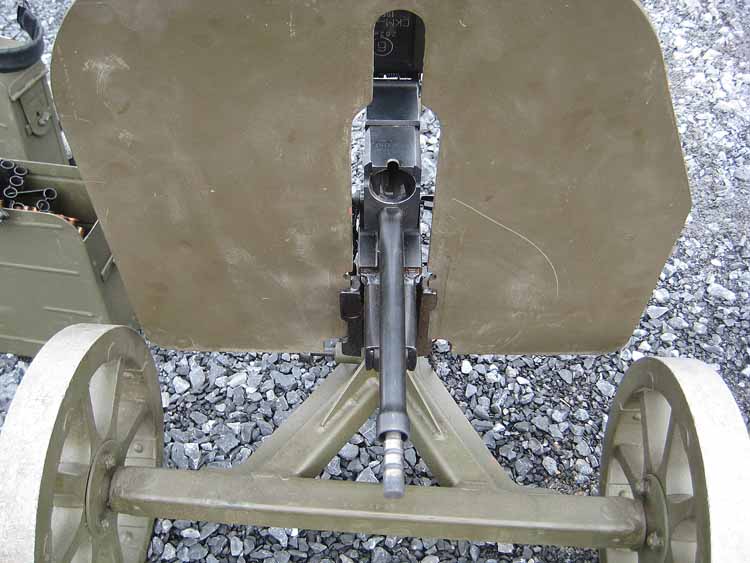
Range testing with the SA43 resembled more of a function test than anything else. Fire and maneuver tactical exercises using the SA43 as the base of fire were not practical. Interestingly, a smooth profile barrel sent originally with the SA43 exhibited headspace issues typified by cases rupturing in the chamber. Credit has to be given to the overbuild characteristics of the Goriunov as the ruptured case event went unnoticed until difficulty was encountered getting the next round to chamber. A phone call to Century and Wise Lite had the SA43, minus carriage, shipped back to Wise Lite for inspection and repair. Within two weeks the SA43 was returned to continue the evaluation with a new barrel fitted on the same receiver. This barrel featured longitudinal fluting that was a distinction of the SGM model type. Discussions with Wise Lite indicated the SA43 received was an early prototype that had not been updated with improvements with gas regulation and other tweaks to smooth out function process.
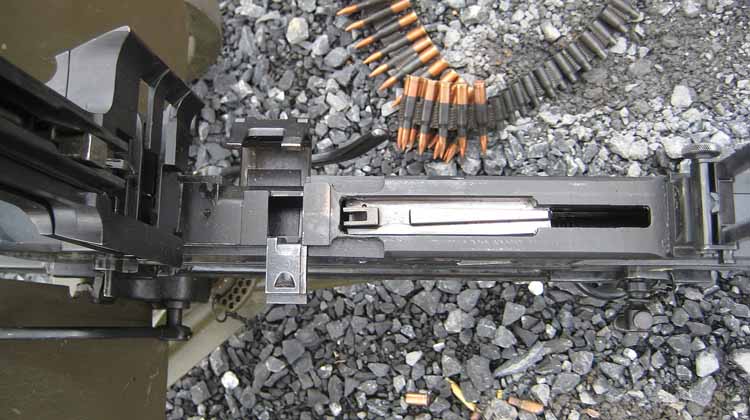
The SA43 proved a success after the return from Wise Lite with multiple belts of ammunition sent down range. The sights were confirmed and tested to see if adjustments tracked as indicated on the tangent markings out to approximately 400 yards. The weight of the SA43 definitely makes it a static position weapon; though the carriage can be pulled behind a vehicle, tractor, or four-wheeler easy enough. On flat ground, a “crew” can swivel and move the SA43 smoothly with the Degtyarev carriage’s long trail arm, which can be folded for storage purposes. Initial firing showed the value of being flexible enough to get in the prone position behind the SA43. Subsequent testing from a “dug-in” position proved both more comfortable and more realistic to actual field use. Even in semiautomatic mode the safety and trigger could easily be manipulated fast enough to allow for fire to be observed and corrected via visual feedback. Ultimately, it proved not a far leap of imagination to visualize how a SG43 could anchor a position with its firepower. The heavy profile barrel was slow to heat up, especially considering how much slower semiautomatic is compared to automatic, and the simplicity of switching barrels would allow a trained gunner and assistant in keeping the Goriunov in action for long durations. The Century SA43 is certainly a conversation piece when observed on the range. Better yet, it is a fun and functioning part of firearms history.
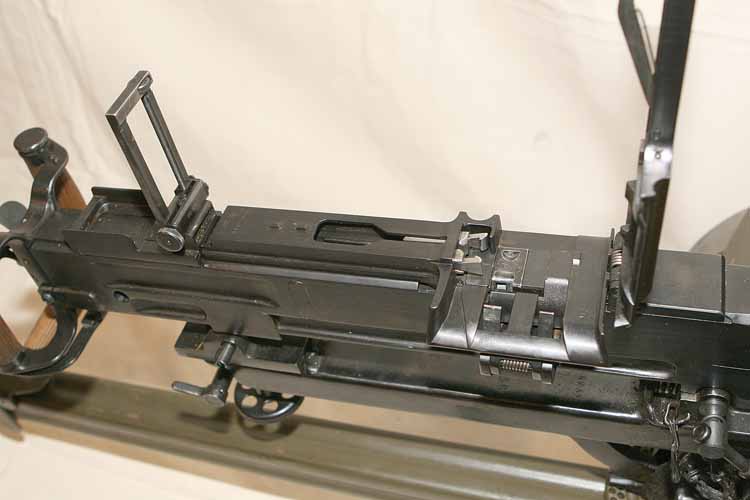
Sites of Interest
Century International Arms
430 South Congress Ave. Suite 1
Delray Beach, FL 33445
(800) 527-1252
www.centuryarms.com
Wise Lite Arms
PO Box 258
Boyd, Texas 76023
(940) 433-8095
www.wiselitearms.net
| This article first appeared in Small Arms Review V13N12 (September 2010) |






